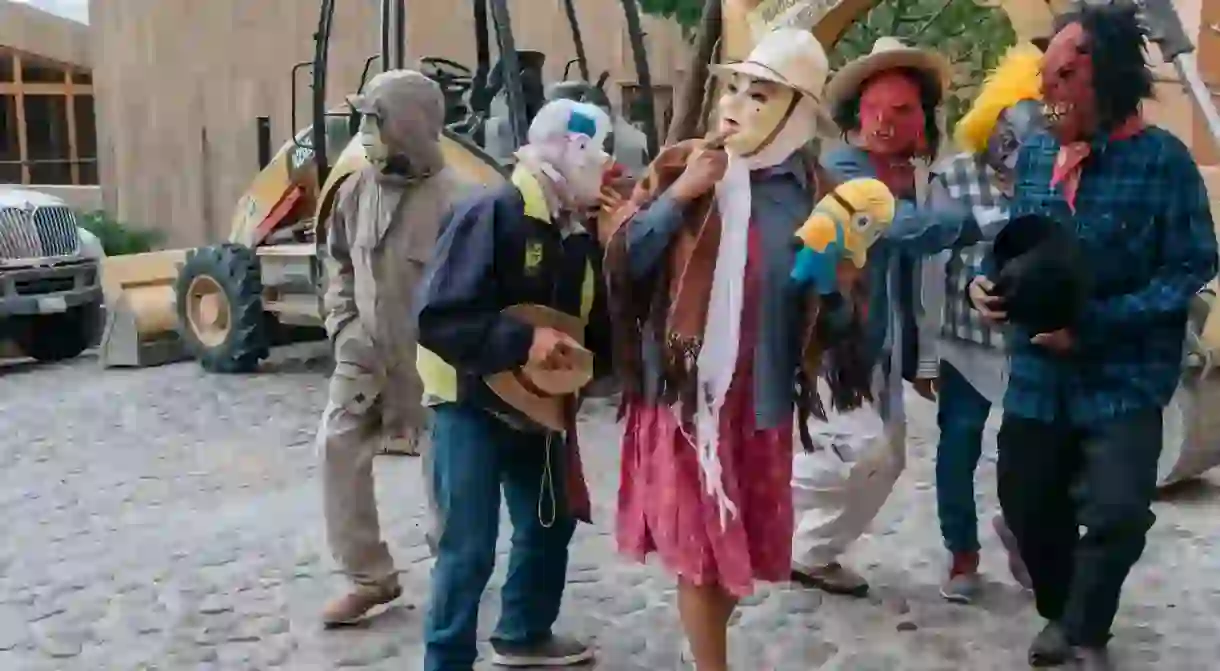A Glimpse into the Carnival of the Ancestors, Mexico

The Teotitlán del Valle dancers don the masks of old men and dress in a traditional manta cloth as they laugh a wild, cackling laugh and are joined by townspeople and street musicians as they perform their ritual dances. While it might sound like a party, there is actually serious business happening—these are rituals that date back to pre-Hispanic times and unite communities.
El Baile de los Viejitos (‘the Dance of the Old Men’) is a reflection of the particular political indenpence of the communities in Oaxaca. The event presents the concerns and issues of the community through the voices of trusted men who dress up as ‘ancestors’ and go before the current authorities.





Although many outsiders confuse this five-day event with a continuation of the Easter celebrations because it follows Holy Week and the related activities of that holiday, this tradition dates back to the pre-Hispanic practices of autonomous indigenous communities and their efforts to confront their leaders honestly and anonymously in order to improve their local governments while retaining community cohesion.


The state of Oaxaca has 570 municipalities, one of the highest rates of this type of state-level division in the entire country. This is a result of pre-colonial communities that were politically autonomous and that continue to fight for their right to self-govern.


In 1995, the state of Oaxaca passed a law that allowed each municipality to opt out of the political party system, which at that time was generally accepted throughout the country, and instead elect their own leaders using their traditions and customs. A large percentage of the municipalities acted on the new law and began to elect local officials through a council of elders and a general community assembly.


The election process was unique for individual communities, but included public voting (as opposed to the western concept of private voting), appointing leaders who were not affiliated with any party, and the exclusion of various sections of the local population (meaning it was not possible for women, non-natives, or even the followers of certain religions to be involved).


Prior to El Baile de los Viejitos, the community of Teotitlán del Valle was divided into five sections and appointed a designated trusted member of the community (generally a man) to represent it before the local authorities. Elders were also appointed to be the watchmen of the town and given staffs to symbolize authority. These watchmen still go from house to house to talk to the neighbors about local issues.


On the day of the event, the elders dress in costume to remain anonymous as they are escorted by their attendants, who are usually men dressed as women to represent the female population of the community. A party is held with food and drink—the setting at which the elected member will go before the authorities. There is dancing and music, after which each community representative meets with the authorities to discuss the current state of local politics.



The elders and their entourage preform a ritual dance that represents the relationship between the politicians and the people. They also make offerings to the politicians of mezcal, sweets, beer, or herbs, a tradition that not only shows the community’s gratefulness to the local government but also serves as a reminder of the balance the government must maintain between wielding its power and serving the people.




The ambiance of this celebration is festive and fun, but El Baile de los Viejitos is also a serious event. It’s a demonstration of the relationship between the Oaxacan people and its leaders. For outsiders, this is a fascinating example of political participation that is not seen in many parts of the world. While foreigners are welcome to come and enjoy the festivities, the rituals are reserved for local residents.















